#harvardfineartslib
 ALT
ALTHand-coloring technique was introduced in Europe in the 1840s, but the practice of hand coloring photographs became more refined and widespread in Japan. By the 1880s, it had become a common practice and a defining characteristic of Japanese tourist photography.
Working on a low wooden table laid out with brushes, inkstones, and porcelain bowls, artists applied colors, prepared with a small amount of buckskin glue, in a delicate and precise manner. In the 1880s and 1890s they began using more vivid colors made from aniline dyes.
The process of coloring a photograph was infinitely tedious, and a master colorist could be expected to produce two or three finished prints during a twelve-hour day. Eventually, studios hired more artists and set up a kind of production line with each man or woman responsible for a range of colors or a particular area of a photograph. One artist colored faces, for example, then he or she passed the photograph along to another who colored clothing, and so on. This greatly increased the number of finished prints in a day. Various sources estimate that by the 1890s successful studios employed anywhere from around 20 to 100 colorists.
Flower seller, Japan.
Lantern slides, hand-colored.
8 x 10 cm
Creation Date: 1900-1940
Repository: Harvard Fine Arts Library, Special Collections
HOLLIS number: olvwork371874
 ALT
ALT ALT
ALT“I have always wanted to tell my story, or, more to the point, my side of the story.” – Faith Ringgold.
Faith Ringgold is a painter, mixed media sculptor, performance artist, writer, teacher, and lecturer. Born 1930 in Harlem, New York, Ringgold began her artistic career as a painter in the 1950s.
During the early 1960s Ringgold traveled in Europe. She created her first political paintings, “The American People” Series from 1963 to 1967. This is when Ringgold began to tell “her side of the story” through her art - her lived experience with racial injustice as a black woman in the 1960s. The exhibition “American People, Black Light” showcased these early paintings of the 1960s.
“James Baldwin had just published ‘The Fire Next Time,’ Malcom X was talking about us ‘loving our black selves,’ and Martin Luther King Jr. was leading marches and spreading the word. All over the country and the world people were listening to these black men. I felt called upon to create my own vision of the black experience we were witnessing … I had something to add—the visual depiction of the way we are and look. I wanted my painting to express this moment I knew was history. I wanted to give my woman’s point of view to this period.”
In addition to paintings, Ringgold also created soft sculptures, masks, and story quilts, for which she is best known today.
Image 1: Front cover featuring “Black Light Series #1, Big Black”, 1967, Oil on canvas, 30 1/4”x 42 1/4”
Image 2: “Black Light Series #1: Big Black” and “Black Light Series #2: Man”, 1967, Oil on canvas, 30 1/16” x 24 1/8”
American people, Black light : Faith Ringgold’s paintings of the 1960s
Essay by Michele Wallace, edited by Thom Collins and Tracy Fitzpatrick.
Author / Creator: Ringgold, Faith
Purchase, N.Y. : Neuberger Museum of Art, Purchase College, State University of New York, c2010.
136 p. : ill. (chiefly col.) ; 28 cm.
English
HOLLIS number: 990127471960203941
 ALT
ALT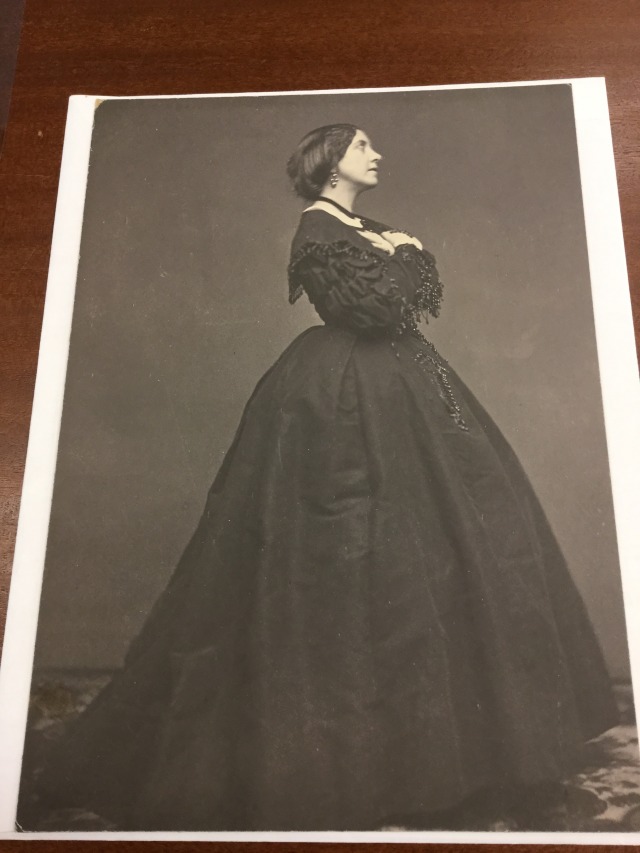 ALT
ALTSalted paper print was an early negative/positive printing process developed by William Henry Fox Talbot in England in 1839. Many beautiful examples of this process were created in the 19th century and can be found in a variety of photograph collections.
Harvard’s Weissman Preservation Center (WPC) undertook Salt Print Initiative at Harvard, a university-wide project to preserve and enhance access to salt prints at Harvard. The project focused on photogenic drawings, paper negatives, and salted paper prints (positive prints created from paper or glass-plate negatives) found throughout Harvard’s libraries, archives, and museums. The Fine Arts Library holds many salted prints in our special collections.
You can learn more about Salt Print Initiative at Harvard on https://projects.iq.harvard.edu/saltprintsatharvard
 ALT
ALT ALT
ALTBorn in San Francisco, Carlos Villa (1936 – 2013), was an Asian-American of Filipino descent. He once described himself as “a Filipino not born in the Philippines—I am an American, not fully accepted because I am a Filipino in America.”
Villa’s work explored cultural diversity and identity. He lived in Los Angeles and New York in the 1960s, but returned to San Francisco in 1969. There he began teaching art and became involved with multicultural activism.
Image 1: “Tatu”, 1969, ink on itec print, 22”x 18”
Image 2: Black and white photograph of Carlos Villa by Irene Poon, 1997
Leading the way : Asian American artists of the older generation
Photographic portraits and biographical sketches by Irene Poon ; [introduction by Paul Karlstrom ; foreword by Nanying Stella Wong ; historical essay by Lorraine Dong].
Poon, Irene.
Wenham, Mass. : Gordon College, 2001.
108 p. : ill. (some col.), ports. ; 31 cm.
“The creativity and careers of the pioneering artists featured in this publication is the subject of a ground-breaking exhibition at Gordon College. Selected art works and Irene Poon’s photographic portraits of these senior Asian American artists provide an insightful introduction to the Asian American artists who led the way in the decades of the 30s through the 60s. Many of these artists continue to be productive in the 21st century.”–BOOK JACKET.
English
2001
HOLLIS number: 990087693250203941
 ALT
ALTMay is National Photography Month! The Fine Arts Library holds more than 150,000 photographs and slides documenting Islamic art and architecture, as well as ethnographic views that provide cultural context.
Middle East and Islamic Photographs Collections are strong in albumen silver prints produced by commercial studios in the second half of the 19th century. These images are complemented by the photographic output of the first generation of scholars of Islamic art history, such as K.A.C. Creswell and Ernst Herzfeld, taken with documentary intent.
Most prominent is the Harvard Semitic Museum Photographic Archives. Developed at the Semitic Museum between 1891 and 1992 and transferred to the Fine Arts Library in 1995, the archive includes more than 38,000 images in a variety of formats.
Turkey, Contantinople. Mosque of Santa Sophia.
Robertson, James, 1813-1888, English [photographer]
Albumenized salt print: Istanbul, Hagia Sophia (Aya Sofia Camii)
10” x 12”, 25.5 x 30.6 cm
salted paper prints
photographs
Repository: Harvard Fine Arts Library, Special Collections
1851-1853
HOLLIS number: olvwork365432
 ALT
ALT ALT
ALT ALT
ALTIn the tradition of portrait photographers such as Nicholas Nixon and Milton Rogovin, Thomas Holton photographed the Lam family over an extended period of time. Holton was born in Guatemala to a Chinese mother who was a tour guide in Taipei and an American father who was a travel photographer. While he grew up in Manhattan, his maternal grandparents lived in Chinatown, but he always felt like a visitor in their neighborhood.
Holton met Steven and Shirley Lam and their three young children when he was taking publicity photographs for the University Settlement, an organization that offered support to immigrants on the Lower East Side (LES) in Manhattan since 1886. Holton visited the Lam family once a week for more than twelve years and became a part of their household.
Holton’s photographs are closer to street photographs than portraits, capturing the daily lives of the family in a candid manner with emotional sensibility and respect. His “The Lams of the Ludlow Street” project was triggered by Holton’s interrogation of his own cultural identity. Over the years, his work has grown into a close relationship with the family - Holton accompanied the family on a trip to Hong Kong and China in 2004, and the Lams attended Holton’s wedding in 2007. Holton’s project shows the Asian American immigrant experience as well as it is the exploration of a family’s turbulent history.
According to Holton, “My need to see the Lams regularly moved beyond the desire to make new photographs and became akin to visiting family members that I cherish. I return out of love and the knowledge that time is fleeting.”
Thomas Holton : the Lams of Ludlow Street
Texts: Charles Traub, Bonnie Yochelson, Thomas Holton.
Heidelberg : Kehrer, c2015.
96 unnumbered pages : ill. (chiefly col.), ports. ; 23 x 29 cm.
English
HOLLIS number: 990145137490203941
 ALT
ALT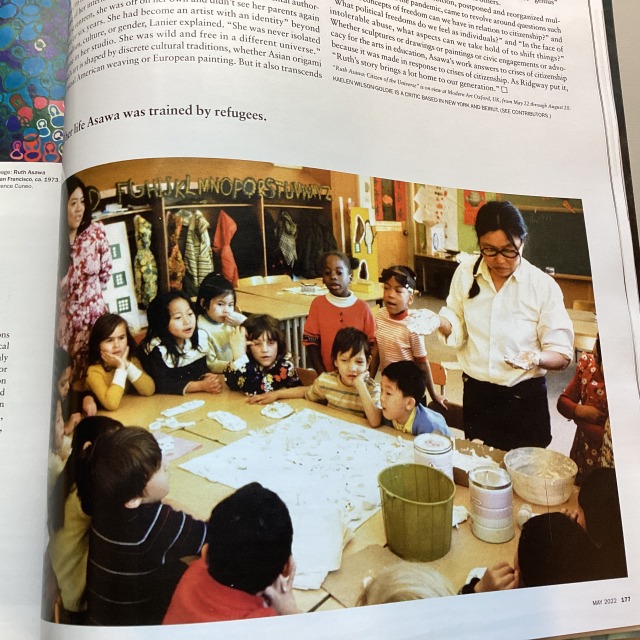 ALT
ALTRuth Asawa (1926 – 2013), best known for her looped wire sculptures, worked in a wide range of media, including drawing, painting, lithograph, ceramic, and public art. In the May 2022 issue of Artforum, Kaelen Wilson-Goldie writes in an article entitled “Productive Tensions” that “Asawa worked in a crowded constellation of artmaking modes.”
After the bombing of Pearl Harbor, Asawa and her family were sent to internment camps all over the country. Her father was arrested, and Asawa faced unrelenting prejudice and racism. After nearly completing her training at Milwaukee State Teachers College, Asawa learned that she would not be able to complete the student teaching requirement for her degree, because at the time no schools would allow a Japanese-American student teacher into their classrooms.
In a letter to her daughter Lanier, Asawa wrote, “I no longer want to nurse such wounds.” Then turning to her hands to work on sculpture, “I now want to wrap fingers cut by aluminum shavings, and hands scratched by wire.” To warn her daughter about the prejudice and violence her children may face, Asawa continued, “This attitude has forced me to become a citizen of the universe, by which I grow infinity smaller, than if I belonged to a family, or province, or race.”
Image 1: Black and white photograph of Asawa drawing at her home. Photo: Bob Turner. 1990.
Image 2: Asawa teaching art to elementary school students in San Francisco. Photo: Laurence Cuneo. 1973.
You can find Artforum and many other periodicals in our Reading Room.
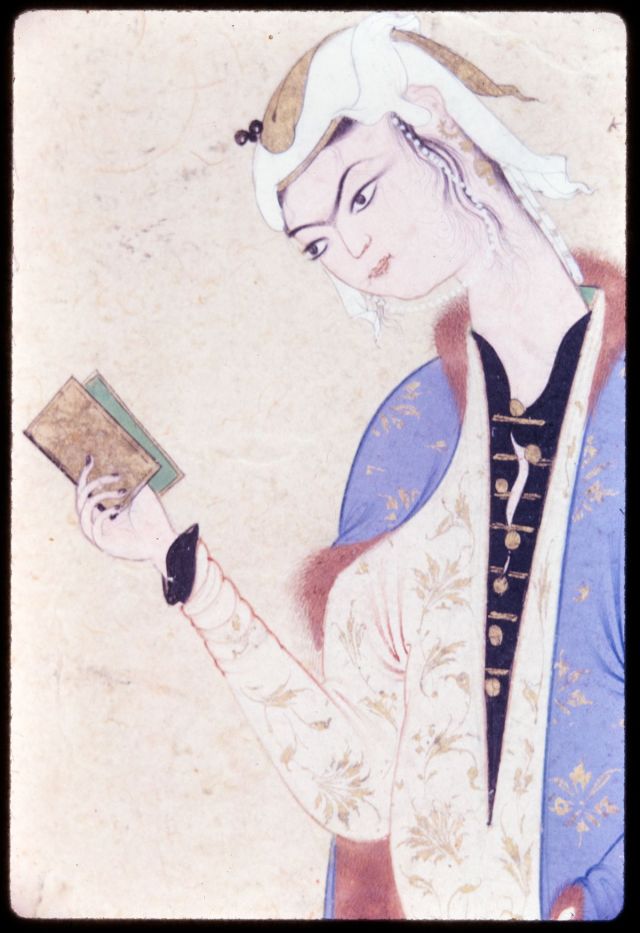 ALT
ALT ALT
ALTMay is National Get Caught Reading Month!
Girl reading
Mirza ‘Ali, b. c. 1510, d. before 1576, Iranian [artist]
Ink, gold, and opaque watercolor on paper
Dimensions: height 34.3 centimeters; width 23 centimeters
Inscription: Poetry signed by Shah Mahmud Nishapuri and Salim
Culture
Islamic
Safavid
c. 1570
Repository: Museum of Fine Arts, Boston, Suffolk, Massachusetts, United States
HOLLIS number: 8000983254
 ALT
ALT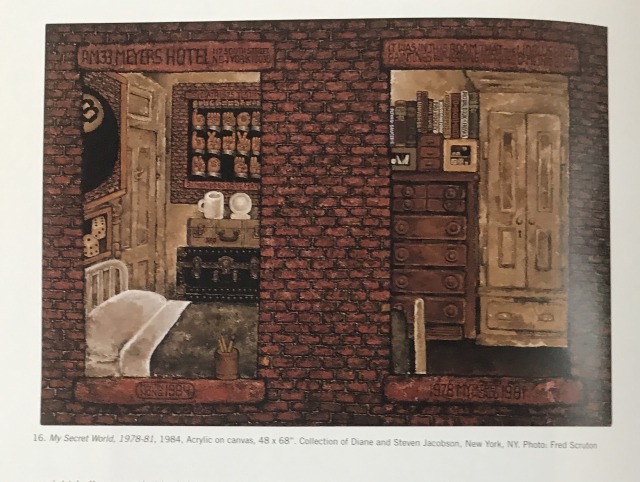 ALT
ALT“Taking down to street level this time, I wanted to focus in close on some of the endless layers of conflict that has us all bound together… Always locked in, always locked out, winners and losers all…” - Martin Wong
Martin Wong (1946 – 1999) painted urban landscapes such as the tenement apartment buildings in the Lower East Side (LES) where he lived most of his life. He also depicted the lives of people considered underdogs, whether inmates in state prison, graffiti artists, firemen, etc.. Wong was a mostly self-taught Chinese-American artist, who grew up in Chinatown in San Francisco and was openly gay. When he first moved to New York, he lived in a cheap hotel room in exchange for working as a night porter before moving to an apartment in a Hispanic section of the LES known as “Loisaida.”.
“During the ’80s, in an era when Neo-Expressionism was the dominant mode, the largely self-taught artist stood out in subject and style. He sported a long mustache and cowboy duds. He was an openly gay Asian-American man during a period when the city’s Asian diaspora was treated as invisible. (Only 10 years prior, Chinese activists had realized the state census hadn’t bothered to even count hundreds of immigrants living in downtown tenements.) He also made it so that pinning him down on the basis of any one identity was impossible. Wong wasn’t deaf, but he used ASL. He hung out with Puerto Ricans, though he didn’t speak Spanish. He often felt anxious, but he used parody to sublimate his insecurities. In some outsider circles, he was an insider.” (from “Human Instamatic: Martin Wong’s Visionary Paintings of New York continue to Intrigue” by Tessa Solomon, Art in America, June 7, 2021)
Wong labeled himself ethnically as Chino-Latino because his father had Mexican heritage. In his paintings, he meticulously documented his urban environment and the lives lived within it using homoerotic imagery, poetry, and language to explore multiple ethnic, racial, and cultural identities, as well as to celebrated his own queer identity.
Image 1: Front cover featuring “Kato”, 1992, Acrylic on linen.
Image 2: “My Secret World”, 1978-81, Acrylic on canvas.
Sweet oblivion : the urban landscape of Martin Wong
[essays by] Marcia Tucker … [et al.] ; edited by Amy Scholder.
Author / Creator
Wong, Martin
New York : Rizzoli : Distributed by St. Martin’s Press, c1998.
85 p. : col. ill. ; 26 cm.
English
c1998
HOLLIS number: 990078744150203941
 ALT
ALTIn memory of Hung Liu who passed away last August and in honor of Asian American and Pacific Islander Heritage Month.
Hung Liu was a Chinese American artist who once said her goal was “to invent a way of allowing myself to practice as a Chinese artist outside of a Chinese culture.”
Liu was born in 1948 during the revolutionary era in Changchun in northeast China,. Her father was a teacher imprisoned for his involvement in anti-Communist politics. During the Cultural Revolution, she was sent by the government to the countryside to work on farms for “re-education.”
In the 1970s, Liu studied at Beijing Teachers College and Central Academy of Fine Arts, and earned a graduate degree in 1981. But she grew restless with the officially-sanctioned Socialist Realist style and subjects. In 1984, she was given a permission to travel to the United States and enrolled in the MFA program at the University of California, San Diego.
Liu settled permanently in the Bay Area. She started teaching at Mills College in Oakland in 1990, eventually retiring in 2014.
Her death in August 2021 came less than three weeks before the scheduled opening of a career survey, “Hung Liu: Portraits of Promised Lands,” at the National Portrait Gallery in Washington, D.C. She was the first Asian American woman to have a solo exhibition there.
Her work incorporated photo-based images that combined the political and the personal. Many of these images were of figures forgotten by history such as laborers, immigrants, prisoners, and prostitutes. (From “Hung Liu, Artist Who Blended East and West, Is Dead at 73” by Holland Cotter, The New York Times, August 22, 2021)
Image: “Sister Hoods”, 2003, Oil on canvas, 72”x 72”
Summoning ghosts : the art of Hung Liu
Oakland Museum of California.
Liu, Hung, 1948-2021
招魂
Berkeley : University Of California Press, 2013.
216 p. : ill. ; 28 cm.
English
2013.
HOLLIS number: 990136645170203941
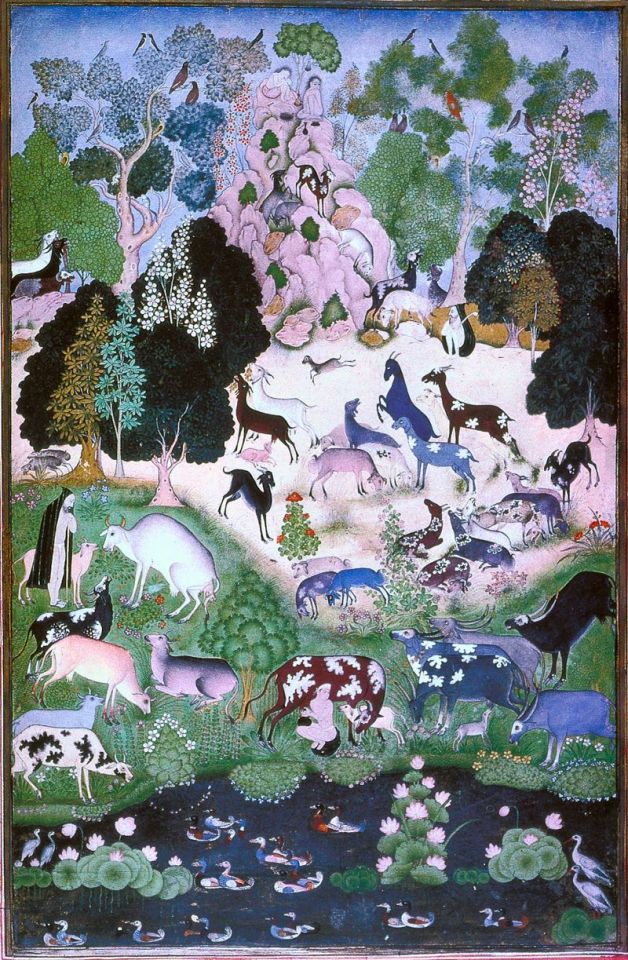 ALT
ALTApril 22nd is also International Mother Earth Day. A day to reflect the interdependence that exists among human beings, other living species and the planet we all inhabit.
Animals and ascetics in a landscape
Place of production: Hyderābād, Andhra Pradesh, India
Opaque watercolor on paper
36.7 x 24.7 cm
Culture
Indian
Islamic
Style / period
Deccani
ca. 1690
Repository: Aga Khan, Prince Sadruddin - Collection, Geneva, Switzerland
HOLLIS number: olvwork58545
 ALT
ALTEach year on April 22, National Earth Day campaigns around the globe to promote ways to keep the Earth healthy and our planet livable. The theme for Earth Day 2022 is “Invest in Our Planet.”
Personal: Forest, Belgium
Ullens de Schooten, Baroness Marie-Thérèse, Belgian, 1905-1989 [photographer]
1951-1972
Repository: Ullens Collection, Harvard Fine Arts Library, Special Collections
HOLLIS number: olvwork630276
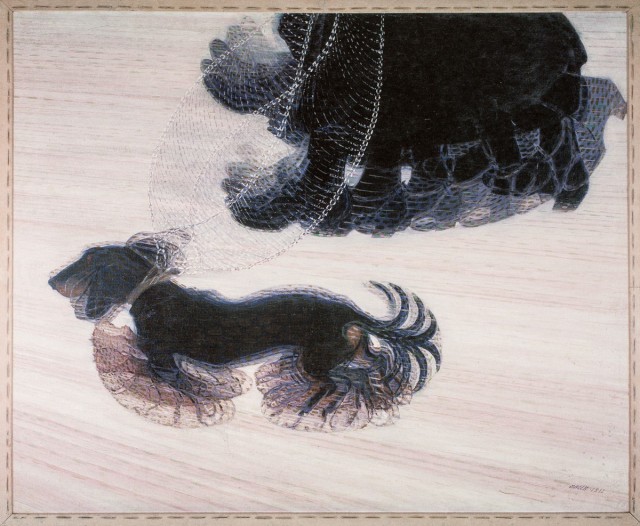 ALT
ALTLet’s go, puppies and humans. It’s National Canine Fitness Month! Let’s get moving!
Dynamism of a dog on a leash
Alternate Title: Leash in motion
Balla, Giacomo, 1871 or 1874-1958, Italian [artist]
Oil on canvas
89.9 x 109.9 cm.
Italian
1912
Repository: Albright-Knox Art Gallery, Buffalo, New York, United States
HOLLIS number: olvwork14762
 ALT
ALT ALT
ALT ALT
ALT“On March 5, 2007, a bomb went off in the centuries old Al Mutanabbi Street book sellers district in Baghdad. The explosion took the lives of thirty people and destroyed a large portion of the neighborhood. Al-Mutanabbi Street is named after the famous classical Arab poet Abu at-Tayyib al-Mutanabbi (915–965 CE), and it has been a thriving center of Baghdad’s bookselling and publishing for many years.
The book sellers, who survived, rebuilt their stores and are once again in business. They sell works by Sunnis, Shiites, Christians, and Jews, children’s books, and progressive publications from around the world.
A coalition of poets, artists, writers, printers, booksellers, and readers was created within a short time of the bombing; broadsides of their writings and artwork about this tragic event were printed, and recitations were made in many cities.
The 2007 bombing and the destruction of Al-Mutanabbi Street resulted Al-Mutanabbi Street Starts here – book arts and festivals to commemorate the bombing of Baghdad’s historic bookselling street and celebrate freedom of expression.” - Excerpts from Al-Mutanabbi Starts Here website.
Breathe for those who cannot.
Burrell, Ginger.
San Jose : Midnight Moon Press, c2013.
1 vol. ; 13 cm.
English
“Discarded book pages torn, burned and reassembled, original poetry by the artist."
Edition of 10.
 ALT
ALT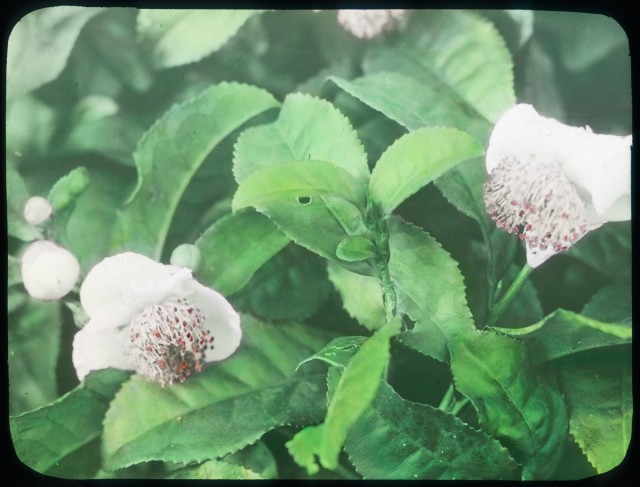 ALT
ALTApril is National Month of Hope, and do we need hope more than ever right now. Here in Cambridge, Massachusetts, we’re seeing many flowers blooming now, including cherry blossoms on campus. Spring flowers are the sign of hope.
Image 1: Cherry blossoms outside the library taken on April 12, 2022.
Image 2:
Cherry blossoms (sakura), Japan.
Lantern slides, hand-colored.
8 x 10 cm
Part of Etz-Trudell collection of hand-colored lantern slides of Japan, Korea and India
For further information, please see HOLLIS record 10155668.
1900-1940
Harvard Fine Arts Library, Special Collections
HOLLIS number: olvwork367847
 ALT
ALTToday is Look Up at the Sky Day. Let’s go out and do some “skying” as John Constable did.
John Constable (English, 1776 –1837), known for his atmospheric landscape paintings, was always interested in the sky, believing that the sky was “the key note, the standard of scale, and the chief organ of sentiment” in a landscape painting. Constable made full-scale oil sketches, in addition to numerous observational studies of landscapes and clouds. For the sky studies, he added notes often on the back of the sketches, describing the weather conditions, direction of light, and time of day. His observation was also scientific as his annotations reveal his knowledge on meteorological terminology. (Summarized from Wikipedia.)
Cloud study (sky study)
Constable, John, 1776-1837, English [artist]
13 x 18.5 cm.
English
paintings
ca.1819
Repository: Gordon, A. L. - Collection
HOLLIS number: olvwork185718
 ALT
ALT“What kind of fight should we carry on in art?” This was a question raised by one of the students who were attended a two-day exploration of human empathy led by artist Kara Walker along writer Rebecca Walker in Turin, Italy in 2011, Walker responded, “Well, the struggle for quite a long time has been to make work as a woman artist, or woman artist of color, without necessarily having to explain what being a woman artist, or a woman of color, actually is, all the time, without assuming that the audience viewing the work or listening or reading is something other than you.” (p. 167)
Kara Walker : a negress of noteworthy talent
Attribution: a cura di Olga Gambari ; [testi, Richard Flood … [et al.]].
Author / Creator: Walker, Kara Elizabeth
Torino : Fondazione Merz, c2011.
207 p. : ill. (chiefly col.) ; 22 cm.
Italian
English
Catalog of an exhibition held at the Fondazione Merz, Turin, Italy, Mar. 25-July 3, 2011.
Includes bibliographical references.
c2011
HOLLIS number: 990130664810203941
 ALT
ALT ALT
ALT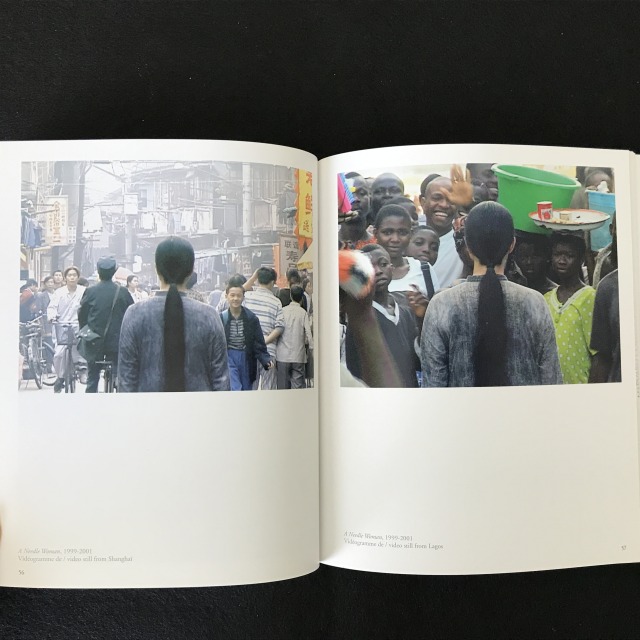 ALT
ALT“I guess the reason why my work has been engaged to present issues, regardless of a continuous singular context, is because I’ve been questioning old and fundamental issues of art and life. All human activities and problems come from the same root, which are old questions that have no answer, and endlessly repeat in history in one form or another.” – Kimsooja in an interview for Artecontexto.
InKimsooja’s video performance/installation entitled “A Needle Woman” (1999-2001), we see the artist’s back remain motionless, like “a symbolic needle,”against the flow of pedestrians in the midst of a busy street or while standing, sitting or lying down in the wilderness.
Kimsooja
Author / Creator
Kim, Soo-ja, 1957-
Milano : Silvana, 2012.
96 p. : ill. (chiefly col.) ; 20 cm.
Italian
English
Catalogue of an exhibition held at the Musée d'art moderne, Saint-Etienne, France, Feb. 25-May 28, 2012.
2012
HOLLIS number: 990131859090203941
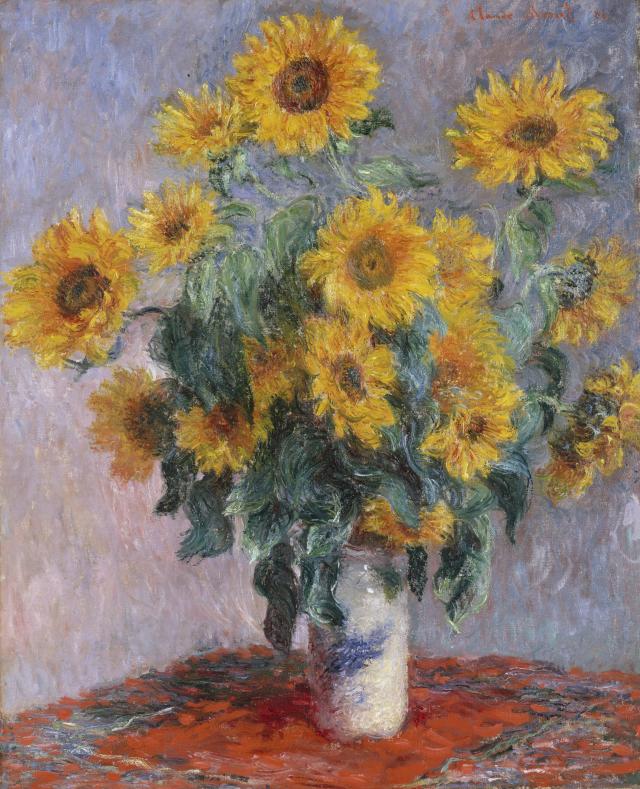 ALT
ALTClaude Monet, French, 1840-1926. Bouquet of Sunflowers. n.d. Images, 39 ¾ x 32 in. (101 x 81.3 cm). The Metropolitan Museum of Art: http://www.metmuseum.org
https://jstor.org/stable/community.16009211
Oil on canvas
1881
 ALT
ALTBodichon, Barbara Leigh Smith, 1827-1891. Study of Sunflowers. Images, n.d. https://jstor.org/stable/community.18116567
Oil on canvas, 82 x 40 cm
1875
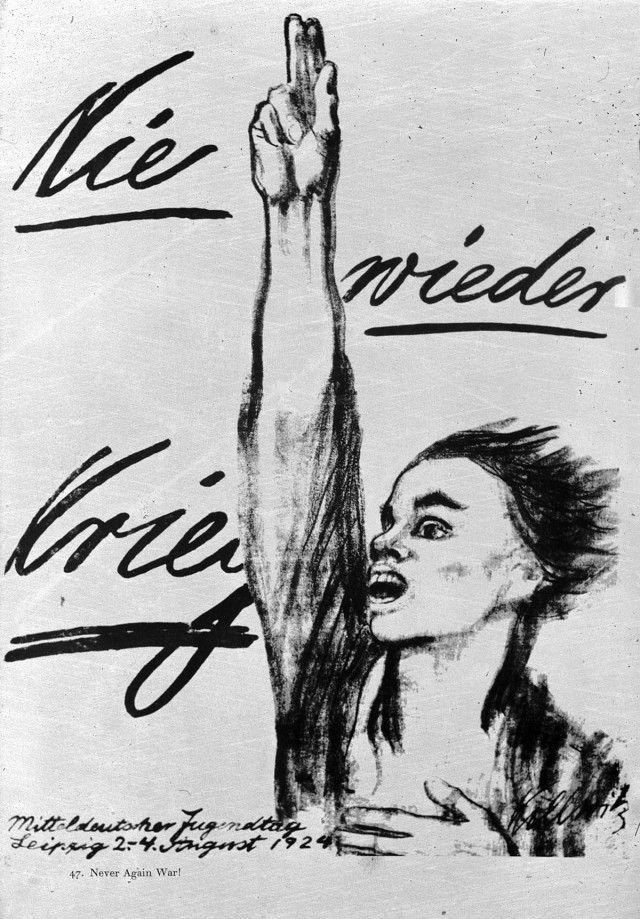 ALT
ALT“We [women] are endowed with the strength to make sacrifices which are more painful than giving our own blood. Consequently, we are able to see our own [men] fight and die when it is for the sake of freedom.” – from Käthe Kollwitz on Sacrifice, Mourning, and Reparation: An Essay in Psychoaesthetics.
Käthe Kollwitz (1867 – 1945) was a German artist, born in Königsberg, Prussia, North German Confederation, now Kaliningrad, Russia. She was interested in art at her early age and began drawing lesions at the age of twelve. She left Prussia for the Academy of the Society of Women Artists in Berlin in order to pursue her artistic studies. In 1919, Kollwitz was the first woman elected to the Prussian Academy of Arts. In 1933, Kollwitz’s position was removed by the National Socialists, and in 1943 much of her work was destroyed in an air raid on Berlin. Her younger son, Peter was killed on the battlefield in 1914 during the First World War.
Throughout her career, her work focused on suffering of marginalized and exploited people, and collective sorrows and grievance from wars.
Never again war!
Kollwitz, Käthe, 1867-1945, German [artist]
Lithography
1924
HOLLIS number: olvwork100983
Moorjani, Angela. “Käthe Kollwitz on Sacrifice, Mourning, and Reparation: An Essay in Psychoaesthetics.” MLN 101, no. 5 (1986): 1110–34. https://doi.org/10.2307/2905713
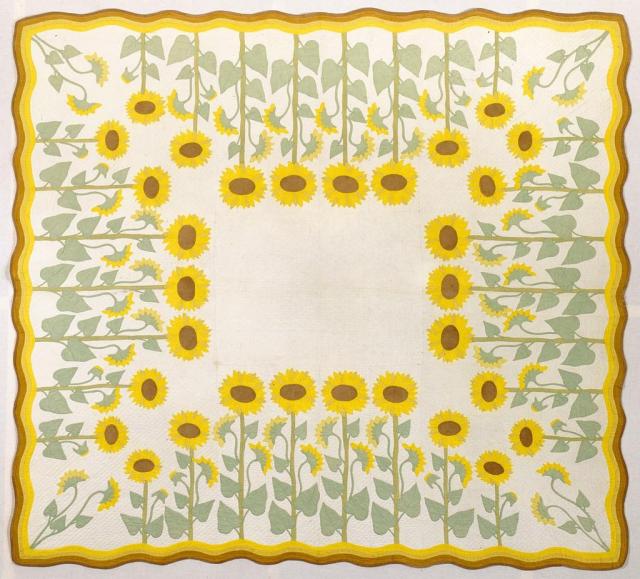 ALT
ALTMarie D. Webster (American, 1859-1956). Quilt; “Sunflower.” n.d. Images, 88 ½ x 81 in. Indianapolis Museum of Art at Newfields;https://discovernewfields.org/collections; Gift of Mrs. Gerrish Thurber. https://jstor.org/stable/community.14162677
Linen, cotton, appliquéd
1911
 ALT
ALT ALT
ALTAmerican artist Cindy Sherman (1954 - ) has long been challenging people’s perceptions of women and the construction of identity by playing various female roles in her photographic work. Sherman created her Untitled Film Stills(1977–80)series when she was just 23 years old, playing many female characters such as the jaded seductress, the unhappy housewife, and the jilted lover. Our favorite, of course, is Sherman as a student (or librarian?) in the book stacks.
Throughout her career, Sherman has continued to transform herself, displaying the diversity of human types and stereotypes in her images of older women, society portraits, and historical figures, such as the Virgin Mary.
Image 1: Black and white photograph of Cindy Sherman
Image 2: Untitled Film Still #13, 1978, Gelatin silver print, 24 x 19.1cm
Cindy Sherman
Author / Creator: Moorhouse, Paul
London ; New York : Phaidon, 2014.
145 pages : illustrations, portraits (some color) ; 26 cm.
English
HOLLIS number: 990140207530203941
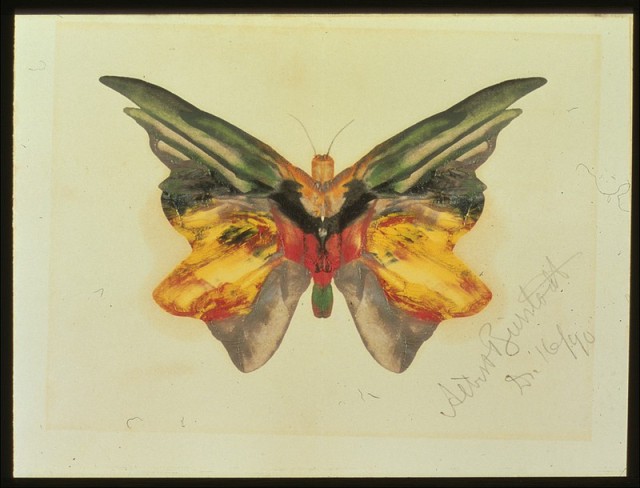 ALT
ALTToday is National Learn About Butterflies Day!
Butterfly
Bierstadt, Albert, 1830-1902, American [artist]
American
paintings
Creation Date: 1890
Repository: Ganz, Jr., Jo Ann & Julian - Collection, Los Angeles, California, United States
HOLLIS number: olvwork192146
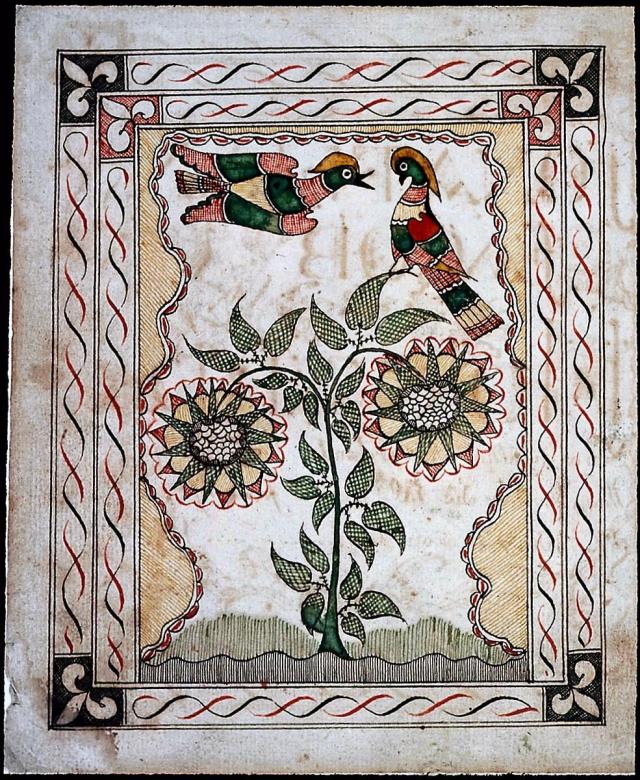 ALT
ALTUnidentified artist, 19th century. Sunflower Plant and Two Birds. Images, n.d. https://jstor.org/stable/community.15635005
Pen and watercolor.
16.67 x 13.81 cm
Repository: Museum of Fine Arts, Boston, Massachusetts, USA
 ALT
ALTSunflowers
Gogh, Vincent van, 1853-1890, Dutch [artist]
Oil on canvas
Dimensions:91 x 72 cm.
Dutch
Creation Date: August, 1888
Repository: Neue Pinakothek, Munich, Germany
HOLLIS number: olvwork208767
 ALT
ALTThis week is Women of Aviation Worldwide Week!
Bessie Coleman (1892 – 1926) earned her pilot’s license in 1921 in France, two years before her more famous contemporary, Amelia Earhart.
Coleman was denied enrollment in American aviation schools because of her race and gender, so she learned French and went to France to earn her pilot’s license from the highly respected Federation Aeronautique International. She was the first American to earn this international pilot’s license in France. (Summarized from www.bessiecoleman.org)
Unknown. Bessie Coleman. n.d.
Images.https://jstor.org/stable/community.14658004
Part of Eyes of the Nation: A Visual History of the United States (Library of Congress)
 ALT
ALT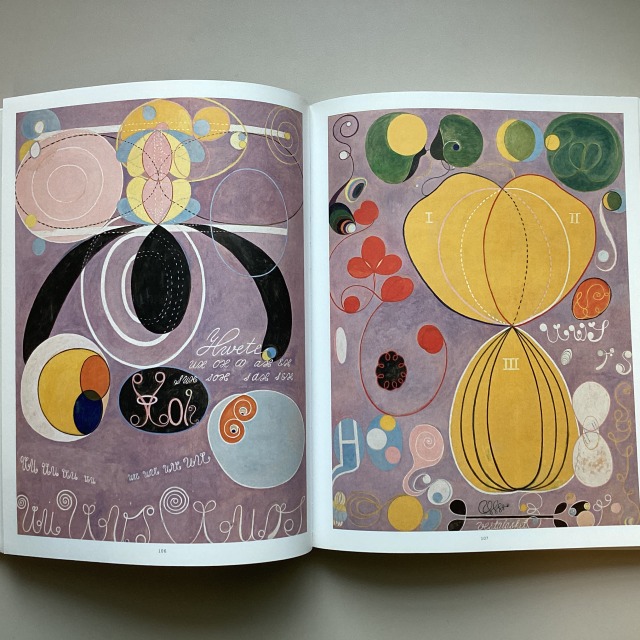 ALT
ALT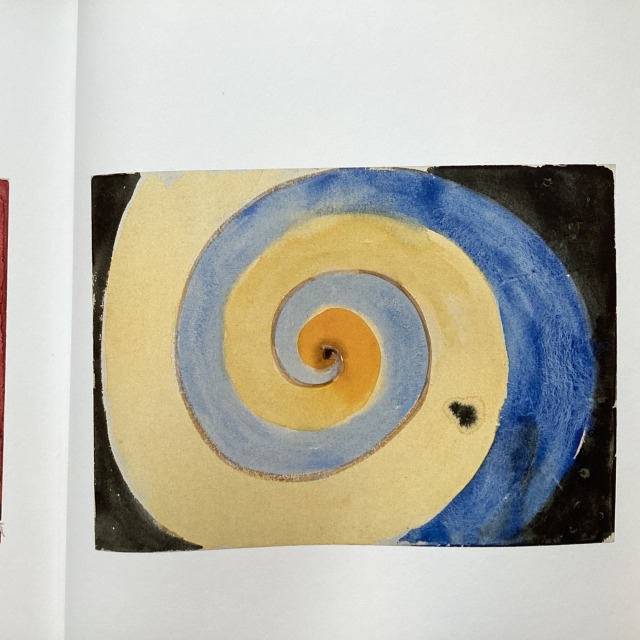 ALT
ALT“Hilma af Klint (1862-1944), an artist whose work is still unknown to a wider public, eschewed representational painting as early as 1906. Between 1906 and 1915 she produced nearly two hundred abstract paintings, some of which are in monumental formats. Like Wassily Kandinsky, Piet Mondrian, and Kazimir Malevich, who have previously been regarded as the main protagonists of abstract art, Hilma af Klint was influenced by contemporary spiritual movements, such as spiritism, theosophy, and anthroposophy. Her multifaceted imagery strives to provide insight into the different dimensions of existence, where microcosm and macrocosm reflect one another. Hilma af Klint left more than one thousand paintings, watercolors, and sketches. This publication presents her most important abstract works as well as paintings and works on paper that have never before been seen in public, enhancing our understanding of her oeuvre.” – From the Publisher.
Image 1: Front cover, showing The Ten Largest, No. 3, Youth Group IV, 1907.
Image 2: Left: Cat. 88. The Ten Largest, No. 6, Adulthood, Group IV, 1907. Right. Cat. 89. The Ten Largest, No. 7, Adulthood, Group IV, 1907
Image 3: Cat. 193. Green Algae. On the Viewing of Flowers and Trees, 1922.
Hilma af Klint : a pioneer of abstraction
Edited by Iris Müller-Westermann, with Jo Widoff ; with
contributions by David Lomas, Iris Müller-Westermann, Pascal Rousseau, Helmut Zander.
Ostfildern : Hatje Cantz, [2013]
295 pages : illustrations (chiefly color) ; 28 cm.
Moderna Museet exhibition catalogue ; no. 375, 0347-9196
English
Klint, Hilma af, 1862-1944
[2013]
HOLLIS number: 990139574170203941
 ALT
ALT ALT
ALT ALT
ALTSwedish artist Hilma af Klint (1862 – 1944) was a true pioneer in abstract art, though her work was almost never seen outside her close circle during her lifetime. In her will, af Klint wrote that her works were not to be shown until twenty years after her death. She was convinced that her contemporaries were not ready to understand their meaning.
af Klint’s abstract paintings predate the first abstract works by Wassily Kandinsky, Piet Mondrian, and Kazimir Malevich, male artists who are still regarded as the forerunners of twentieth-century abstract art.
af Klint’s powerful, groundbreaking, and striking oeuvre challenges the history of art as previously written. March is Women’s History Month, and quite fittingly, we’re kicking off with Hilma af Klint!
Image 1: Page spread: Left: Automatic drawing resembling handwritten note or scribble. Right: Black and white photograph of Hilma af Klint sitting on a chair.
Image 2: The Large Figure Paintings, No. 5, Group III, The Key to All Works to Date, The WU/Rose Series, 1907
Image 3: Cat. 163. No 4, Series V, 1920.
Hilma af Klint : a pioneer of abstraction
Edited by Iris Müller-Westermann, with Jo Widoff ; with contributions by David Lomas, Iris Müller-Westermann, Pascal Rousseau, Helmut Zander.
Ostfildern : Hatje Cantz, [2013]
295 pages : illustrations (chiefly color) ; 28 cm.
Moderna Museet exhibition catalogue ; no. 375, 0347-9196
English
Klint, Hilma af, 1862-1944
[2013]
HOLLIS number: 990139574170203941
 ALT
ALTThis year’s theme for the World Book Day is “You are a reader” with its focus on getting books into the hands of kids.
Green-robed youth holding a manuscript (Museum of Islamic Art, Qatar, MS.42.2007)
Gold and opaque watercolor on paper
Dimensions:115 x 85 cm
Culture:
Safavid
Islamic
Style / period:
Safavid
Creation Date: c. 1525-1575
Repository: Mathaf al-Fann al-Islami, Dawhah (Doha), Qatar MS.42.2007
HOLLIS number: 8001309685
Happy Hina-Matsuri 雛祭り (Doll’s Festival or Girls’ Day in Japan)!
In Japan, this special day is celebrated every year on March 3rd. Hina-ningyo is a set of dolls representing the Emperor, Empress, attendants, and musicians in traditional court dress of the Heian period in Japan. The dolls are displayed on platforms covered with a red cloth, as you can see in this lantern slide.
“During Hina-matsuri and the preceding days, girls hold parties with their friends. Typical foods include hina-arare (雛あられ) (multi-colored rice crackers), chirashizushi (ちらし寿司) (raw fish and vegetables on rice in a bowl or bentobox),hishi mochi (菱餅) (multicolored rice cakes), ichigo daifuku (いちご大福) (strawberries wrapped in adzuki bean paste and mochi), Sakuramochi (桜餅) and ushiojiru (うしお汁) (clam soup, as clam shells represent a joined pair). The customary drink is shirozake (白酒, “white sake”), also called amazake (甘酒,“sweet sake”) a non-alcoholic sake.” – from Wikipedia.
Sounds like a great party time for girls in Japan!
Festival on 3rd March
Japanese Doll Festival or Girls Day (Hina Matsuri), held on March 3.
Hand-colored lantern slide.
3.25 x 4 in.
Part of Etz-Trudell Collection of Hand-Colored Lantern Slides of Japan, India, and Korea
Harvard Fine Arts Library, Special Collections
HOLLIS number: olvwork367312
Happy Hina-Matsuri!!
Post link
 ALT
ALT ALT
ALT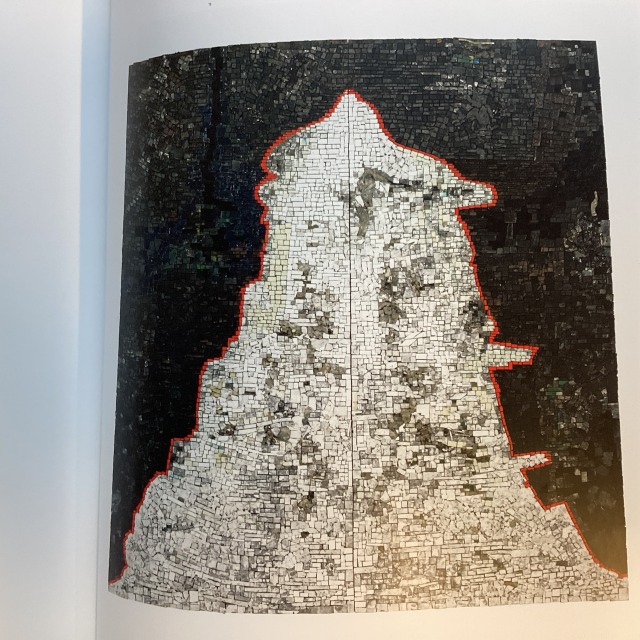 ALT
ALT“I was 21 in 1960, an African American male with an acute need to know myself. The politics of race accelerated my search for identity. Growing up in the South where I experienced racism in its most blatant forms, political boundaries were clearly drawn and based solely upon race. Diverse elements, opposing forces, dichotomy of means, polarities, [and] portraits of psychological space are conceptualizations used in my paintings. All are derived from the nature of politics in America with its distinct separation of black and white.”
“I have always accepted memory as being one of the most powerful elements of human consciousness. Through memory we reconstruct our past. We honor the dead through memory.” – Jack Whitten (from Walker Center magazine article, “Stories of the Soul: A Farewell to Jack Whitten”)
Jack Whitten (1939 – 2018) is known for his innovative process of applying paint on canvases and experimenting with materials in his painting. His style was abstract, but he liked to refer to his art as “mapping the soul.”
Born in Bessemer, Alabama, Whitten moved to New York in 1960. He was inspired by his experiences during the Civil Rights Movement, and he created many works dedicated to influential Black figures in the United States, including Ralph Ellison, Muhammad Ali, Barbara Jordan, and President Barack Obama. Whitten’s work reflected his beliefs in restoring the culture and legacy of his people through art.
Image 1: Jack Whitten in the studio (page spread)
Image 2: Jack Whitten in the studio (page spread)
Image 3: “Black Monolith IV For Jacob Lawrence”2001, Acrylic on Canvas, 96 x 96 in. Courtesy the artist, Alexander Gray Associates, New York; Zeno X Gallery, Antwerp.
Jack Whitten : five decades of painting
with contributions by Kathryn Kanjo, Robert Storr, Quincy Troupe.
Whitten, Jack, 1939-2018 [artist]
San Diego : Museum of Contemporary Art San Diego ; New York : Available through D.A.P./Distributed Art Publishers, [2015]
203 pages : illustrations (chiefly color), portraits ; 31 cm
English
HOLLIS number: 990145227350203941

Our security officer got alarmed when he saw this as our Access Services staff wheeled the book cart by him.
No humans or books were harmed in this image.
Image description:
A white box with an oval shaped opening for holding box. An image of partial facial feature is seen through the opening, as if someone is inside looking out.

Jean Blackwell Hutson (September 7, 1914 – February 4, 1998), American librarian, archivist, writer, and educator, remains a great inspiration to all librarians. As curator and later chief of the Schomburg Center for Research in Black Culture in Harlem, Hutson worked to acquire, catalogue, and exhibit materials to preserve Black History under the auspices of the New York Public Library.
Hutson spoke about her memories of Arturo Alfonso Schomburg whose personal collection of African-American literature and objects became the basis of NYPL’s Schomburg Center, the most comprehensive collection of materials documenting the history and culture of peoples of African descent.
“His books had been catalogued by the Dewey Decimal System, but he had ignored that and he kept the books in his rarest collection arranged by the height of their spine and their hue. So one night I stayed and arranged these books by the decimal system so that everybody else could locate them from the card catalogue. When he came in the next day, he couldn’t find anything. He forbade me to come back into the place.”
That’s true librarian spirit!
Image: Black and white photograph of an older Black woman sitting on a chair between aisles in the library stacks and reading a book. Her walking cane is resting against the shelf next to her.
I dream a world : portraits of black women who changed America
photographs and interviews by Brian Lanker ; edited by Barbara Summers ; foreword by Maya Angelou.
Lanker, Brian.
New York : Stewart, Tabori & Chang : Distributed in the U.S. by Workman Pub., 1989.
167 p. : ports. ; 29 cm.
Contains the interviews and photographs of 75 black American women.
English
1989
HOLLIS number: 990016501590203941

Love is in the air today…. Happy Valentine’s Day!
Image description: A painting of an Indian couple wearing traditional Indian garment, standing in the middle of the green field with some vegetations. A man is on the right and his right hand is gently resting on a woman’s right shoulder. She is looking at his face.
Shah Shuja with a beloved, a folio from the Shah Jahan album (NY Met, 55.121.10.35)
Govardhan, 17th c., Indian [artist]
Gold, ink, and opaque watercolor on paper
Dimensions:38.9 centimeters; 26 centimeters
Mughal
Islamic
c. early 16-17th centuries
Repository: Metropolitan Museum of Art, New York, New York, United States
HOLLIS number: 8001352875

Happy Valentine’s Day!
Tapestry with heart-shaped medallions
Silk and cotton
Dimensions:235 x 113 cm
Turkish
Ottoman
Islamic
17th century
Repository: Louvre Museum, Paris
HOLLIS number: 8001070074
Is it artwork? Is it an artist’s book? Is it conceptual art?
It’s all of the above and it’s a magazine!
Art/Life magazine was one of the longest running artists’ periodicals created entirely by hand. It was published from 1981 to 2006. Each page is an original piece of art, signed and numbered, and includes objects as diverse as chopsticks, spools of thread, clothespins, potpourri, nails, paint brush, CD, seashell, bottle cap, crushed paper cup, film slides, and a fake thermometer. Art/Life founder Joe Cardella started the magazine as a conceptual exchange among artists, asking them to mail him original artworks from around the world to create limited edition magazines.
Art/Life magazines present challenges to conservators and librarians alike. The magazine is bound in a black binder, which is not sturdy or thick enough to stand upright on its own. Because of protruding objects stuck between the pages, the magazines also resist lying flat. Both physically and conceptually, Art/Life magazines defy being put inneat categories.
Image: Video of flipping through pages.
Art/life
Published: [Santa Barbara, Calif. : Joe Cardella, -c2006.
-v. 25, no. 11.
25 v. : chiefly ill. ; 28 cm.
Frequency note: Monthly (except. Jan.)
English
Began with 1981.
Editor, <1983>-2006: Joe Cardella.
Published in limited edition.
HOLLIS number: 990087654310203941



Jean-Michel Basquiat (1960 – 1988) first came to prominence when he collaborated with Al Diaz to spray-paint enigmatic statements under the pseudonym SAMO© in the Lower East Side of Manhattan during the late 70s. He went on to work on collages, Xerox art, postcards, performances, and music before establishing his reputation as one of the most important painters of his generation. Basquiat was one of the youngest artists to exhibit at the Whitney Biennial in New York at the age of 22, before passing away at the age of 27. His art was spontaneous in the same spirit of street art and graffiti, combining text and image, while mixing social commentary on power structures, systems of racism, colonialism, class struggles, and his experiences in the Black community.
Basquiat’s legacy remains powerful and more relevant than ever today.
Image 1: Front cover
Description: Photograph of Basquiat working on a painting on the floor.
Image 2: Page spread showing Basquiat in front of his work that is consisted of texts.
Image 3: Self-portrait, 1983, Oil on paper and wood. 91.4 x 61cm
Description: On the paper with some light cream color and drips of light brown, a black silhouette of a man’s head is placed in the center. His braided hair is standing upward. His eyes are hollowed out as white.
Basquiat : boom for real
Edited by Dieter Buchhart and Eleanor Nairne, with Lotte Johnson.
Munich ; London : Prestel, 2017.
295 pages : illustrations (some color), facsimiles, portraits ; 29 cm
English
Catalog of an exhibition held at Barbican Art Gallery, September 21, 2017-January 28, 2018, and Schirn Kunsthalle Frankfurt, February 16-May 27, 2018.
ISBN : 9783791356365
ISBN : 3791356364
2017
HOLLIS number: 990152277830203941




Happy Birthday to Fernand Léger who were born on this day in 1881!
French artist, Léger (1881 – 1955) spent two years in service for the French Army at the front in Argonne. His experiences in World War I had a significant effect on his work. While serving in the army, he made many sketches of artillery pieces and fellow soldiers while in the trenches. In September 1916, he almost died from a mustard gas attack. Later, he explained the mechanical and robotic figures and machine-like forms in his paintings thusly:
“…I was stunned by the sight of the breech of a 75 millimeter in the sunlight. It was the magic of light on the white metal. That’s all it took for me to forget the abstract art of 1912–1913. The crudeness, variety, humor, and downright perfection of certain men around me, their precise sense of utilitarian reality and its application in the midst of the life-and-death drama we were in … made me want to paint in slang with all its color and mobility.” (Summarized from Wikipedia.)
Image description:
1. Black and white photograph of the artist in a trench with a cigarette in his mouth.
2. Painting of an abstract human figure with tuber forms with a pipe in his mouth.
3. Painting of a man with a mustache wearing a black tank top looking side way, his arms almost crossed with his right hand holding a cigarette, painted in simplified forms with bold colors, red, black, and some yellow.
4. Watercolor sketch with loose brush strokes with light colors, some yellow, brown, and olive green with black outlines.
Fernand Léger in the Argonne
Black and white photography
Photographer unidentified
French
1915
HOLLIS number: olvwork731577
Soldier with pipe
Léger, Fernand, 1881-1955, French [artist]
50 x 27"
French
paintings
1916
Repository: Kunstsammlung Nordrhein-Westfalen, Düsseldorf, Germany
HOLLIS number: olvwork182037
Mechanic
Léger, Fernand, 1881-1955, French [artist]
45 ½ x 35"
paintings
1920
Repository: National Gallery of Canada, Ottawa, Ontario, Canada
HOLLIS number: olvwork182067
Trench diggers
Léger, Fernand, 1881-1955, French [artist]
Ink, tempera and/or watercolor and red glaze on paper
31.8 x 26.2 cm.
watercolors (paintings)
1916
Repository: Wadsworth Atheneum, Hartford, Connecticut, United States
HOLLIS number: 8000981201

